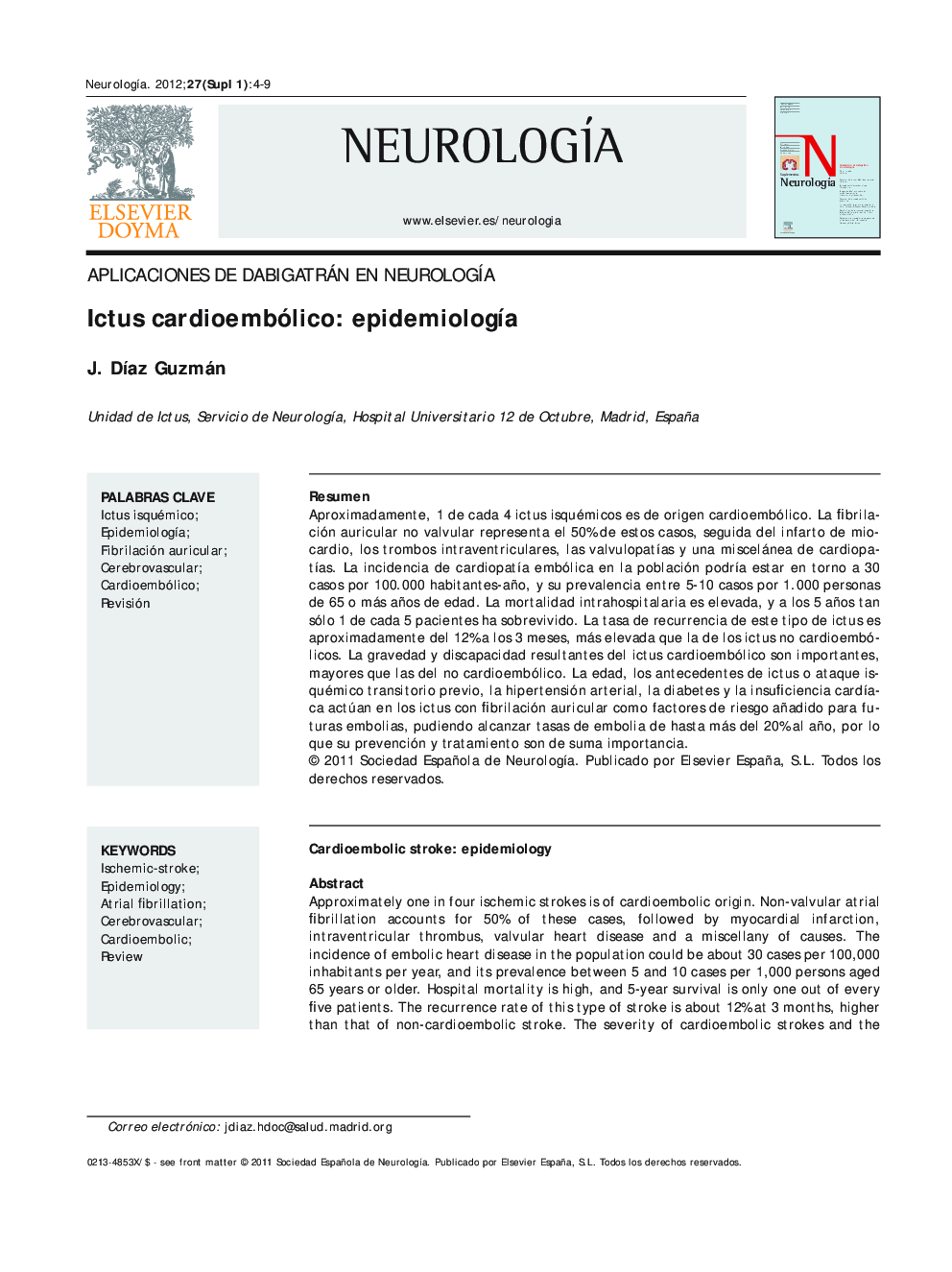| Article ID | Journal | Published Year | Pages | File Type |
|---|---|---|---|---|
| 3076063 | Neurología | 2012 | 6 Pages |
Abstract
Approximately one in four ischemic strokes is of cardioembolic origin. Non-valvular atrial fibrillation accounts for 50% of these cases, followed by myocardial infarction, intraventricular thrombus, valvular heart disease and a miscellany of causes. The incidence of embolic heart disease in the population could be about 30 cases per 100,000 inhabitants per year, and its prevalence between 5 and 10 cases per 1,000 persons aged 65 years or older. Hospital mortality is high, and 5-year survival is only one out of every five patients. The recurrence rate of this type of stroke is about 12% at 3 months, higher than that of non-cardioembolic stroke. The severity of cardioembolic strokes and the resulting disability are greater than with non-cardioembolic stroke. Age, a history of stroke or transient ischemic attack, hypertension, diabetes and heart failure play a role in stroke with atrial fibrillation as additional risk factors for future embolisms. Stroke rates can reach over 20% per year and therefore the prevention and treatment of these events are of paramount importance.
Keywords
Related Topics
Life Sciences
Neuroscience
Neurology
Authors
J. DÃaz Guzmán,
